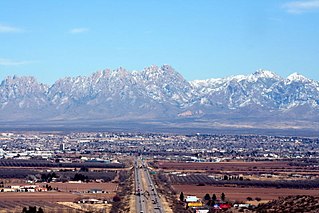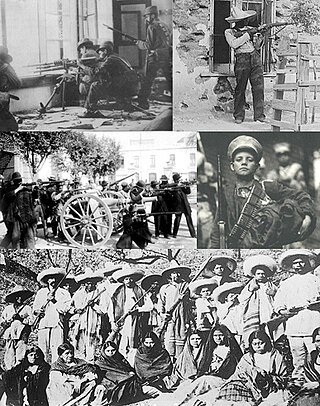Jill Morford is a professor of linguistics at the University of New Mexico, United States.
The central focus of her research is to inform our understanding of language acquisition by studying communication in the visual modality.
Jill Morford is a professor of linguistics at the University of New Mexico, United States.
The central focus of her research is to inform our understanding of language acquisition by studying communication in the visual modality.

Hernán Cortés de Monroy y Pizarro Altamirano, 1st Marquess of the Valley of Oaxaca was a Spanish conquistador who led an expedition that caused the fall of the Aztec Empire and brought large portions of what is now mainland Mexico under the rule of the King of Castile in the early 16th century. Cortés was part of the generation of Spanish explorers and conquistadors who began the first phase of the Spanish colonization of the Americas.

Mexico City is the capital and largest city of Mexico, and the most populous city in North America. One of the world's alpha cities, it is located in the Valley of Mexico within the high Mexican central plateau, at an altitude of 2,240 meters (7,350 ft). The city has 16 boroughs or demarcaciones territoriales, which are in turn divided into neighborhoods or colonias.

New Mexico is a state in the Southwestern United States. It is one of the Mountain States of the southern Rocky Mountains, sharing the Four Corners region of the western U.S. with Utah, Colorado, and Arizona, and bordering Texas to the east and southeast, Oklahoma to the northeast, and the Mexican states of Chihuahua and Sonora to the south. The state capital is Santa Fe, which is the oldest capital in the U.S., founded in 1610 as the government seat of Nuevo México in New Spain; the largest city is Albuquerque (1706).

The Republic of Texas was a sovereign state in North America that existed from March 2, 1836, to February 19, 1846, that bordered Mexico, the Republic of the Rio Grande in 1840, and the United States of America, although Mexico considered it a rebellious province during its entire existence despite the Treaties of Velasco of May 1836. It was bordered by Mexico to the west and southwest, the Gulf of Mexico to the southeast, the two U.S. states of Louisiana and Arkansas to the east and northeast, and United States territories encompassing parts of the current U.S. states of Oklahoma, Kansas, Colorado, Wyoming, and New Mexico to the north and west. The Anglo residents of the area and of the republic became known as Texians.

Texas is a state in the South Central region of the United States. At 268,596 square miles (695,662 km2), and with more than 30 million residents in 2022, it is the second-largest U.S. state by both area and population. Texas shares borders with the states of Louisiana to the east, Arkansas to the northeast, Oklahoma to the north, New Mexico to the west, and the Mexican states of Chihuahua, Coahuila, Nuevo León, and Tamaulipas to the south and southwest; and has a coastline with the Gulf of Mexico to the southeast.

Albuquerque, abbreviated ABQ, is the most populous city in the U.S. state of New Mexico. Its nicknames, The Duke City and Burque, both reference its founding in 1706 as La Villa de Alburquerque by Nuevo México governor Francisco Cuervo y Valdés. Named in honor of the Viceroy of New Spain, the 10th Duke of Alburquerque, the city was an outpost on El Camino Real linking Mexico City to the northernmost territories of New Spain.

The Aztecs were a Mesoamerican culture that flourished in central Mexico in the post-classic period from 1300 to 1521. The Aztec people included different ethnic groups of central Mexico, particularly those groups who spoke the Nahuatl language and who dominated large parts of Mesoamerica from the 14th to the 16th centuries. Aztec culture was organized into city-states (altepetl), some of which joined to form alliances, political confederations, or empires. The Aztec Empire was a confederation of three city-states established in 1427: Tenochtitlan, city-state of the Mexica or Tenochca; Texcoco; and Tlacopan, previously part of the Tepanec empire, whose dominant power was Azcapotzalco. Although the term Aztecs is often narrowly restricted to the Mexica of Tenochtitlan, it is also broadly used to refer to Nahua polities or peoples of central Mexico in the prehispanic era, as well as the Spanish colonial era (1521–1821). The definitions of Aztec and Aztecs have long been the topic of scholarly discussion ever since German scientist Alexander von Humboldt established its common usage in the early 19th century.

New Spain, officially the Viceroyalty of New Spain, or Kingdom of New Spain, was an integral territorial entity of the Spanish Empire, established by Habsburg Spain during the Spanish colonization of the Americas and having its capital in Mexico City. Its jurisdiction comprised a huge area that included what is now Mexico, the Western and Southwestern United States in North America; Central America, the Caribbean, very northern parts of South America, and several territorial Pacific Ocean archipelagos.

Guadalajara is a metropolis in western Mexico and the capital of the state of Jalisco. According to the 2020 census, the city has a population of 1,385,629 people, making it the 7th largest city by population in Mexico, while the Guadalajara metropolitan area has a population of 5,268,642 people, making it the third-largest metropolitan area in the country and the twentieth largest metropolitan area in the Americas Guadalajara has the second-highest population density in Mexico, with over 10,361 people per square kilometer. Within Mexico, Guadalajara is a center of business, arts and culture, technology and tourism; as well as the economic center of the Bajío region. It usually ranks among the 100 most productive and globally competitive cities in the world. It is home to numerous landmarks, including Guadalajara Cathedral, the Teatro Degollado, the Templo Expiatorio, the UNESCO World Heritage site Hospicio Cabañas, and the San Juan de Dios Market—the largest indoor market in Latin America.

Las Cruces is the second-largest city in the U.S. state of New Mexico and the seat of Doña Ana County. As of the 2020 census the population was 111,385. Las Cruces is the largest city in both Doña Ana County and southern New Mexico. The Las Cruces metropolitan area had an estimated population of 213,849 in 2017. It is the principal city of a metropolitan statistical area which encompasses all of Doña Ana County and is part of the larger El Paso–Las Cruces combined statistical area.

The Mexican Revolution was an extended sequence of armed regional conflicts in Mexico from approximately 1910 to 1920. It has been called "the defining event of modern Mexican history". It resulted in the destruction of the Federal Army and its replacement by a revolutionary army, and the transformation of Mexican culture and government. The northern Constitutionalist faction prevailed on the battlefield and drafted the present-day Constitution of Mexico, which aimed to create a strong central government. Revolutionary generals held power from 1920 to 1940. The revolutionary conflict was primarily a civil war, but foreign powers, having important economic and strategic interests in Mexico, figured in the outcome of Mexico's power struggles; the United States involvement was particularly high. The conflict led to the deaths of around three million people, mostly combatants.

The National Autonomous University of Mexico is a public research university in Mexico. It is consistently ranked as one of the best universities in Latin America, where it's also the biggest in terms of enrollment. A portion of UNAM's main campus in Mexico City, known as Ciudad Universitaria, is a UNESCO World Heritage site that was designed by some of Mexico's best-known architects of the 20th century and hosted the 1968 Summer Olympic Games. Murals in the main campus were painted by some of the most recognized artists in Mexican history, such as Diego Rivera and David Alfaro Siqueiros. With acceptance rates usually below 10%, UNAM is also known for its competitive admission process. All Mexican Nobel laureates are either alumni or faculty of UNAM.

Coahuila, formally Coahuila de Zaragoza, officially the Free and Sovereign State of Coahuila de Zaragoza, is one of the 32 states of Mexico.

The Southwestern United States, also known as the American Southwest or simply the Southwest, is a geographic and cultural region of the United States that generally includes Arizona, New Mexico, and adjacent portions of California, Colorado, Nevada, Oklahoma, Texas, and Utah. The largest cities by metropolitan area are Los Angeles, Phoenix, Las Vegas, El Paso, Albuquerque, and Tucson. Prior to 1848, in the historical region of Santa Fe de Nuevo México as well as parts of Alta California and Coahuila y Tejas, settlement was almost non-existent outside of Nuevo México's Pueblos and Spanish or Mexican municipalities. Much of the area had been a part of New Spain and Mexico until the United States acquired the area through the Treaty of Guadalupe Hidalgo in 1848 and the smaller Gadsden Purchase in 1854.

The University of New Mexico is a public research university in Albuquerque, New Mexico. Founded in 1889, it is the state's flagship academic institution and the largest by enrollment, with over 25,400 students in 2021.

New Mexico State University is a public land-grant research university based primarily in Las Cruces, New Mexico. Founded in 1888, it is the oldest public institution of higher education in New Mexico and one of the state's two flagship universities, along with the University of New Mexico. NMSU has extension and research centers across the state, including campuses in Alamogordo, Carlsbad, Doña Ana County, and Grants.

The Mexican War of Independence was an armed conflict and political process resulting in Mexico's independence from Spain. It was not a single, coherent event, but local and regional struggles that occurred within the same period, and can be considered a revolutionary civil war.

Mexico, officially the United Mexican States, is a country in the southern portion of North America. It is bordered to the north by the United States; to the south and west by the Pacific Ocean; to the southeast by Guatemala, Belize, and the Caribbean Sea; and to the east by the Gulf of Mexico. Mexico covers 1,972,550 square kilometers (761,610 sq mi), making it the world's 13th-largest country by area; with approximately 126,014,024 inhabitants, it is the 10th-most-populous country and has the most Spanish-speakers. Mexico is organized as a federal republic comprising 31 states and Mexico City, its capital. Other major urban areas include Monterrey, Guadalajara, Puebla, Toluca, Tijuana, Ciudad Juárez, and León.

The Mexican–American War, also known in the United States as the Mexican War and in Mexico as the Intervención estadounidense en México, was an armed conflict between the United States and Mexico from 1846 to 1848. It followed the 1845 American annexation of Texas, which Mexico still considered its territory. Mexico refused to recognize the Velasco treaty, because it was signed by President Antonio López de Santa Anna while he was captured by the Texan Army during the 1836 Texas Revolution. The Republic of Texas was de facto an independent country, but most of its Anglo-American citizens wanted to be annexed by the United States.

New Mexico chile or New Mexican chile is a cultivar group of the chile pepper from the US state of New Mexico, first grown by Pueblo and Hispano communities throughout Santa Fe de Nuevo México. These landrace chile plants were used to develop the modern New Mexico chile peppers by horticulturist Dr. Fabián García and his students, including Dr. Roy Nakayama, at what is now New Mexico State University in 1894.